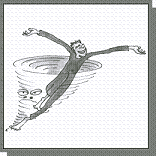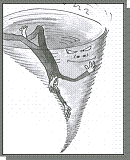 Emotion regulation is a core dialectical behavior therapy (BDT) skill. In some earlier posts about emotion regulation we learned that the ways in which we often try to deal with emotions—such as trying to problem solve, control, or avoid them—tend to be counterproductive. We also looked at a number of more helpful ways we can deal with our emotions such as validation and acceptance. The video below puts this altogether and explains the DBT skill of emotion regulation. To learn more about emotion regulation, please check out my free DBT Skills Course.
Emotion regulation is a core dialectical behavior therapy (BDT) skill. In some earlier posts about emotion regulation we learned that the ways in which we often try to deal with emotions—such as trying to problem solve, control, or avoid them—tend to be counterproductive. We also looked at a number of more helpful ways we can deal with our emotions such as validation and acceptance. The video below puts this altogether and explains the DBT skill of emotion regulation. To learn more about emotion regulation, please check out my free DBT Skills Course.
DBT Skills: Emotion Regulation
 Emotion regulation is a core dialectical behavior therapy (BDT) skill. In some earlier posts about emotion regulation we learned that the ways in which we often try to deal with emotions—such as trying to problem solve, control, or avoid them—tend to be counterproductive. We also looked at a number of more helpful ways we can deal with our emotions such as validation and acceptance. The video below puts this altogether and explains the DBT skill of emotion regulation. To learn more about emotion regulation, please check out my free DBT Skills Course.
Emotion regulation is a core dialectical behavior therapy (BDT) skill. In some earlier posts about emotion regulation we learned that the ways in which we often try to deal with emotions—such as trying to problem solve, control, or avoid them—tend to be counterproductive. We also looked at a number of more helpful ways we can deal with our emotions such as validation and acceptance. The video below puts this altogether and explains the DBT skill of emotion regulation. To learn more about emotion regulation, please check out my free DBT Skills Course.

 Why is it that when we’re feeling anxious, we tend to worry so much, even though worrying tends to do nothing except make us feel even more anxious? One reason is that it’s easy to regard worrying as something that can be productive: that it either helps us deal with anxiety, or protects us from the thing we’re feeling anxious about. If worrying actually did have these effects, it would be quite beneficial. But unfortunately, worrying usually only increases anxiety. So why do we continue to do it time and time again?
Why is it that when we’re feeling anxious, we tend to worry so much, even though worrying tends to do nothing except make us feel even more anxious? One reason is that it’s easy to regard worrying as something that can be productive: that it either helps us deal with anxiety, or protects us from the thing we’re feeling anxious about. If worrying actually did have these effects, it would be quite beneficial. But unfortunately, worrying usually only increases anxiety. So why do we continue to do it time and time again? Handling conflict in a relationship is challenging for many couples. It can be difficult to find ways to talk about disagreements or complaints that don’t devolve into arguments that don’t resolve anything, leave you both feeling worse, and potentially lead to more fights down the road.
Handling conflict in a relationship is challenging for many couples. It can be difficult to find ways to talk about disagreements or complaints that don’t devolve into arguments that don’t resolve anything, leave you both feeling worse, and potentially lead to more fights down the road. In a previous post, we looked at the
In a previous post, we looked at the  According to the cognitive behavioural therapy (CBT) approach to anxiety, one of the reasons that overcoming anxiety can be so difficult is that anxiety generates vicious cycles involving your physiological, cognitive, behavioural, and emotional domains. We looked at these
According to the cognitive behavioural therapy (CBT) approach to anxiety, one of the reasons that overcoming anxiety can be so difficult is that anxiety generates vicious cycles involving your physiological, cognitive, behavioural, and emotional domains. We looked at these